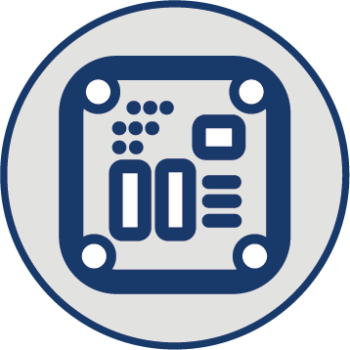Scroll to learn more
Facial recognition is one of the most controversial topics in the technology sector today. Since first being explored in the 1960s, this biometric identification technique has seen consistent growth in accuracy and popularity. By 2020, following the introduction of Face ID on Apple iPhones three years earlier, the global face recognition market had reached a value of USD $3.72 billion. By 2026, this is projected to more than treble to USD $11.62 billion.
The controversy surrounding facial recognition technology is primarily concerned with privacy. One of the areas expected to make a large contribution to the growth in face recognition is government programmes. The Chinese government currently utilises an extensive public surveillance system – 54% of the world’s surveillance cameras are located in China – and the USA is rolling out facial recognition in airports across the country.
There are two main types of facial recognition: one-to-one and public. One-to-one systems are designed for purposes such as access control, where faces are scanned one by one and then compared against a pre-defined database of users to grant or deny them access. Public face recognition systems are generally used for surveillance purposes to scan many different faces at once and identify any known individuals.



Facial recognition technology exploits the natural variation and uniqueness of human beings’ facial features as a means of verifying identity. Specialist cameras analyse the shape and position of facial features and create a biometric data map of the face. That biometric map is then compared to the system’s database to establish whether or not the individual is recognised.
In general, there are 4 basic steps to identifying faces:
The earliest attempts at computer-driven face recognition involved pinpointing the coordinates of certain facial features from a photograph onto a graphics tablet. Those points were then used to calculate 20 different distances between the points. A computer could then compare the distance calculations for different photographs in order to find potential matches.
As computer technology advanced, so did the sophistication and accuracy of face recognition. Initially, recognition was based mainly on photographs of people’s faces. From the 1990s onwards, the focus has shifted to live facial detection, which can find and analyse individuals’ faces in real time, often from busy or low-resolution images. Modern techniques use a wide range of technologies; for example, Face ID on iPhones works by projecting thousands of infrared dots onto the user’s face and generating a map of the contours of the face.
Facial recognition has been growing steadily in popularity in access control systems for over a decade. The onset of the COVID-19 pandemic additionally provided the backdrop for a sudden and sharp increase in demand for facial recognition technology. As a completely touchless solution, facial recognition eliminates the physical contact that other systems such as fingerprint and iris scanners require.
In access control, face recognition systems are, by their nature, one-to-one identification methods. A single individual approaches the camera, and their face is scanned and compared to the existing database of users. As well as being touch-free, facial recognition offers an extremely rapid and reliable access control solution. This technology is now faster, more efficient, and more accurate than the human eye.
Additionally, face recognition is imbued with the general security benefits of biometric authentication systems.
The ievo iface™ is an advanced facial recognition terminal that matches up to 20,000 faces in just 1 second.
With one camera for visible light and another for near-infrared light (NIR), faces are detected and analysed even in low ambient lighting conditions. iface™ offers a new level of accuracy, reliability, and speed for biometric security, as well as a hygienic touch-free solution.


